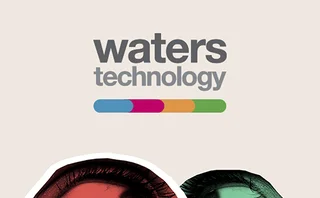Webseminar: Standardizing Corporate Actions
Standardization: the Benefits of Investment
While it remains a reality for many, a concern for some, and an unachievable goal for others, standardization is still at the forefront of all corporate actions discussions. This promises to be the case for the foreseeable future. Progress is on its way, but the challenges are not going to vanish anytime soon, especially when the complexity and volume of events is only expected to rise.
A poll carried out during the live event found that the lack of standardization is still one of the main issues corporate actions teams face. While standardization has always been on the agenda, the level of urgency around the need for harmonized corporate actions seems to be greater than ever.
The poll found 23% and 20% of participants thought tackling data quality and timeliness respectively were the most important issues corporate actions teams now face. A total of 57% said dealing with the lack of standardization was the most urgent issue.
Boston-based Deborah Culhane, chief operating officer at Fidelity ActionsXchange and speaker on the day, said the poll results concerning standardization reflect what is really troubling the corporate actions space at the moment. “This is what we are hearing from the industry. The construct of corporate actions is very different across markets, so there is a real need to create right from the issuer source a greater level of standardization,” explained Culhane.
In fact, discussions of the need for greater issuer involvement in the standardization of corporate actions also took center stage during the live event. With 44% of participants claiming it was the main barrier for the standardization of corporate actions, the need for greater issuer participation was yet again highlighted as one of the outstanding challenges to overcome in this space.
New York-based Ranjit Chatterji, head of global network management at Citi, said one of the biggest challenges at the moment is breaching the gap between the consumers of the information and the issuers of the information.
“There is a lot of inconsistency in the industry and lack of standardization from the issuer level across the various intermediary stages. The end-investor often has to get different information from different providers, and this can only be resolved if we adopt standards across the market. We really have to get the issuers on the same page as the rest of the industry and get them to take steps that would improve the automation and standardization of the market,” he said.
Getting quality data directly from the issuers to the investors without misinterpretation and a lot of manual work remains a key focus alongside harmonization. While the challenge remains, market participants think current market conditions could make a difference or at least lead to change.
Speakers agreed that costs may eventually push issuers to evaluate their involvement. New York-based Nanda Kumar, product director at SIX Telekurs and speaker on the day, explained that while the issuers need to examine their expenses for communicating corporate actions they must also recognize the value of machine-readable standards in this space.
Meanwhile, some market participants expect the legal entity identifier (LEI) to change the course of standardization. While issuers will increasingly need
to assess their investment in supporting corporate actions in terms of their expenses for communicating with agents, the LEI may just make a difference in this space.
Fidelity ActionsXchange’s Culhane explained that even if the LEI will not fully address corporate actions standardization and harmonization challenges, it could represent an opportunity to facilitate issuer involvement, directly engaging them in the initial reporting of the corporate actions life-cycle.
“The LEI is subject to issuer reporting, so I do think it would engage the issuer right up front. From a corporate actions standardization and harmonization perspective, [the LEI] is certainly not the holy grail, but it does represent an important turning point toward engaging directly with issuers to communicate changes in the marketplace,” she said.
But the need for greater issuer involvement was not the only major barrier highlighted by participants. In fact, while harmonization and standardization never vanish from the agenda, especially in the US and Europe, concerns around the speed of change and the lack of consistency across the globe are gaining ground. A total of 43% of respondents said the lack of consistency across regions was to blame for the lack of standardization.
And while the Securities Market Practice Group (SMPG) is focusing on this issue, more has to be done to facilitate standardization globally. “Japan and South Africa, for example, are getting more and more engaged, but there is still a lot more work required by market infrastructure,” explained Chatterji.
Meanwhile, speakers agreed that while costs are still a major issue for corporate actions, especially around the investment in ISO 20022, they should not be seen as the main challenge in the space. In fact, poll results revealed only 13% of participants think investment costs should be one of the main concerns of corporate actions teams at the moment.
SIX Telekurs’ Kumar said that despite current conditions, firms continue to invest in the automation of corporate action services. “Corporate actions departments are slowly but surely beginning to shed their cost center images and being viewed as an opportunity to drive efficiency and create a comprehensive advantage by improving services,” said Kumar.
Looking Back
While no-one doubts standardization is the most necessary and major requirement for harmonization of corporate actions, when it comes to everyday solutions, some market participants have questioned the value of standardization. Doubts revolve around whether firms should stop using proprietary formats.
While proprietary standards sometimes allow greater flexibility, standardization efforts must not wane as a result, according to some of the speakers. Citi’s Chatterji explained that while proprietary standards can definitely be more user-friendly, the problem is that by definition they do not enable standardization across a wide range of users and consumers as well as publishers of the information.
In some cases, data management vendors have found that despite offering data in the latest format, clients continue to prefer older formats. Clients may not always be ready to keep up with change, observed SIX Telekurs’ Kumar.
“When we adopted and started to provide our data in ISO 15022, some of our client base was not ready to jump on board and take our corporate actions in this format, still favoring the proprietary formats due to their greater flexibility,” said Kumar, adding that as the world of corporate actions evolves quickly, the standards world has to keep up and hopefully ISO 20022 will eliminate the remaining challenges.
Efforts to facilitate standardization are ongoing, and huge steps have been made in the past two to five years, said Christine Strandberg, product manager, global transaction services, SEB Merchant Banking, and co-chair of the SMPG corporate actions working group. “From an ISO and SMPG perspective, despite the need to do more, change has taken place, especially in the alignment of ISO 15022 and market practice,” she said, adding the standards group has made several change requests to both Swift and ISO, intended to make the standards easier to use.
However, the extent to which more complex corporate actions can be automated was questioned. Strandberg explained it is important to differentiate exactly what people are looking to automate and what can be automated in the first place. “If you look at the ISO messaging for corporate actions, whether it’s ISO 15022 or ISO 20022, you are looking at processing messages, how you set up the event, how you process it and what you elect...but the actual condition, the entire prospectus, restrictions and so on can never be in any format other than narrative,” she said.
But while the usage of proprietary formats may represent a quick fix, clinging to such formats is not a long-term solution, especially considering Swift’s and DTCC’s push for ISO 20022 and the use of eXtensible business reporting language in corporate actions.
The Timeliness Question
In recent months, timeliness of corporate actions has been under scrutiny. While some claim data quality and standardization inevitably should be a higher priority for firms, others believe without timeliness, data quality cannot make a difference. While some claim timeliness is often set aside in the standardization debates, the poll at the event found participants do not think this is true. Sixty percent rated timeliness very high in importance, 37% percent rated it as highly important and only 3% said it was not crucial.
The degree to which data timeliness and data quality are interlinked makes prioritizing one over the other extremely complex, according to Strandberg. “If the data is timely, but poor in quality levels, what good does that do? The front office can make a wrong decision on an investment because it has quick data, but the data is completely incorrect,” she said.
Timeliness of corporate actions is necessary for risk reduction and mitigation, according to the speakers. “Timeliness has a direct implication for risk. While we assume the back office is very much concerned with accuracy, they need to have the event confirmed in the most timely fashion, particularly for voluntary events, so the right downstream processes for communication can be created,” said Culhane.
And while only 5% of participants claimed timeliness will be high on the agenda in years to come, speakers agreed its importance is not underestimated by market participants.
Meanwhile, 35% claimed automation will be the hot topic in coming years, and standardization reaped 60% of the votes.
Complexity around events continues to grow and the need for automation is on the rise. And while costs may still be an issue, investment is not expected to suffer, as the momentum corporate actions needed for investment is here to stay. Corporate actions are now far from just a back-office issue, and their impact may be a key factor in operational changes. This is already happening, with industry groups and associations pushing for standardization and the LEI on its way. Change may be closer than we expect.
Only users who have a paid subscription or are part of a corporate subscription are able to print or copy content.
To access these options, along with all other subscription benefits, please contact info@waterstechnology.com or view our subscription options here: https://subscriptions.waterstechnology.com/subscribe
You are currently unable to print this content. Please contact info@waterstechnology.com to find out more.
You are currently unable to copy this content. Please contact info@waterstechnology.com to find out more.
Copyright Infopro Digital Limited. All rights reserved.
As outlined in our terms and conditions, https://www.infopro-digital.com/terms-and-conditions/subscriptions/ (point 2.4), printing is limited to a single copy.
If you would like to purchase additional rights please email info@waterstechnology.com
Copyright Infopro Digital Limited. All rights reserved.
You may share this content using our article tools. As outlined in our terms and conditions, https://www.infopro-digital.com/terms-and-conditions/subscriptions/ (clause 2.4), an Authorised User may only make one copy of the materials for their own personal use. You must also comply with the restrictions in clause 2.5.
If you would like to purchase additional rights please email info@waterstechnology.com
More on Trading Tech
Doing a deal? Prioritize info security early
Engaging information security teams early in licensing deals can deliver better results and catch potential issues. Neglecting them can cause delays and disruption, writes Devexperts’ Heetesh Rawal in this op-ed.
Google gifts Linux, capital raised for Canton, one less CTP bid, and more
The Waters Cooler: Banks team up for open-source AI controls, S&P injects GenAI into Capital IQ, and Goldman Sachs employees get their own AI assistant in this week’s news roundup.
Waters Wavelength Ep. 323: MarketAxess’s Chowdhury and Burke (plus some Cusip updates)
This week, Riad Chowdhury, head of Asia-Pacific, and Dan Burke, global head of emerging markets at MarketAxess, join to discuss block trading in fixed income. Plus Reb discusses her recent article about Cusip and updates on the class action lawsuit moving through the courts.
As datacenter cooling issues rise, FPGAs could help
IMD Wrap: As temperatures are spiking, so too is demand for capacity related to AI applications. Max says FPGAs could help to ease the burden being forced on datacenters.
WatersTechnology latest edition
Check out our latest edition, plus more than 13 years of our best content.
Deutsche Bank casts a cautious eye towards agentic AI
“An AI worker is something that is really buildable,” says innovation and AI head
LLMs are making alternative datasets ‘fuzzy’
Waters Wrap: While large language models and generative/agentic AI offer an endless amount of opportunity, they are also exposing unforeseen risks and challenges.
Trading venues seen as easiest targets for Esma supervision
Platforms do not pose systemic risks for member states and are already subject to consistent rules.







